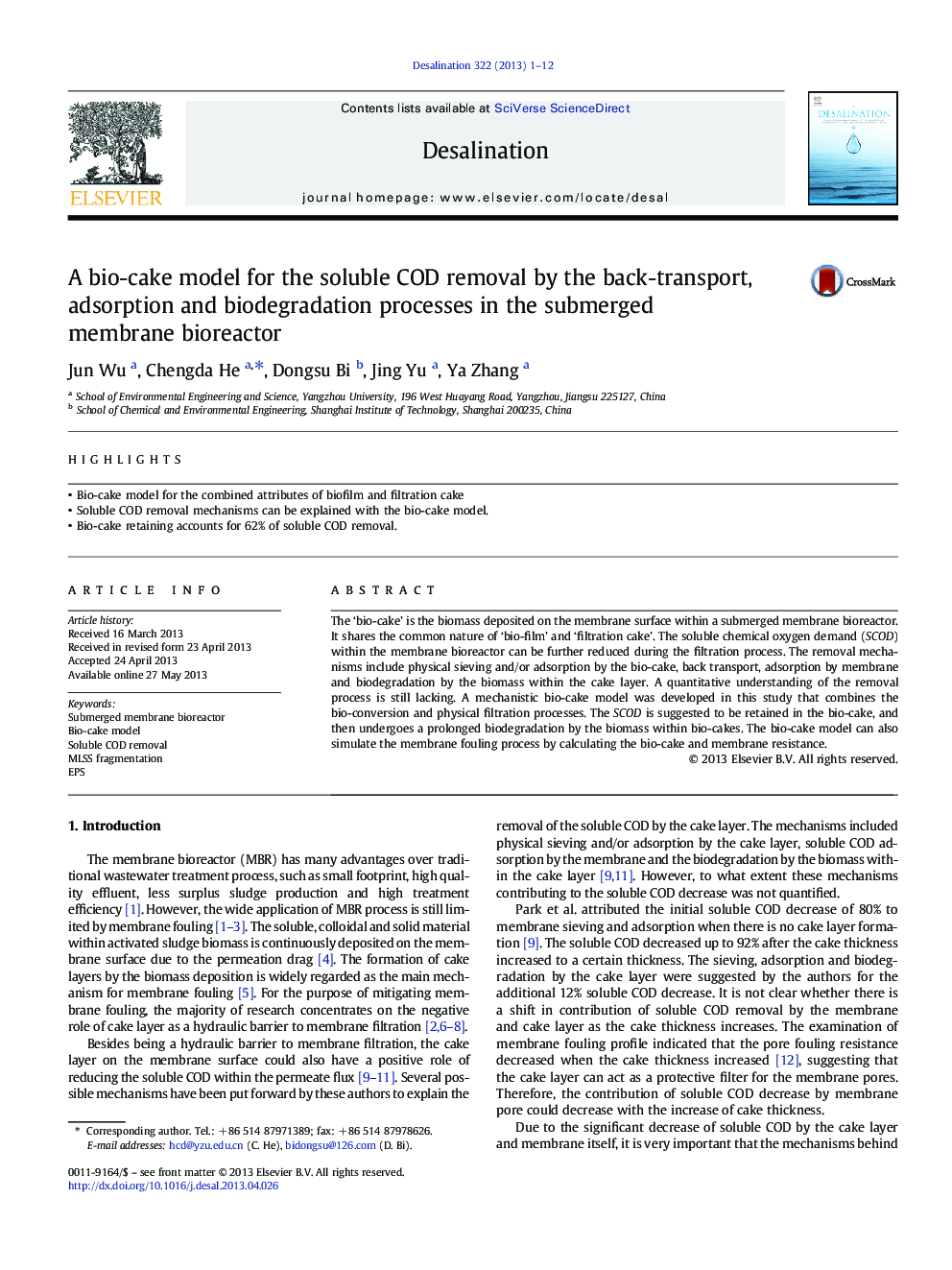| Article ID | Journal | Published Year | Pages | File Type |
|---|---|---|---|---|
| 623985 | Desalination | 2013 | 12 Pages |
•Bio-cake model for the combined attributes of biofilm and filtration cake•Soluble COD removal mechanisms can be explained with the bio-cake model.•Bio-cake retaining accounts for 62% of soluble COD removal.
The ‘bio-cake’ is the biomass deposited on the membrane surface within a submerged membrane bioreactor. It shares the common nature of ‘bio-film’ and ‘filtration cake’. The soluble chemical oxygen demand (SCOD) within the membrane bioreactor can be further reduced during the filtration process. The removal mechanisms include physical sieving and/or adsorption by the bio-cake, back transport, adsorption by membrane and biodegradation by the biomass within the cake layer. A quantitative understanding of the removal process is still lacking. A mechanistic bio-cake model was developed in this study that combines the bio-conversion and physical filtration processes. The SCOD is suggested to be retained in the bio-cake, and then undergoes a prolonged biodegradation by the biomass within bio-cakes. The bio-cake model can also simulate the membrane fouling process by calculating the bio-cake and membrane resistance.
